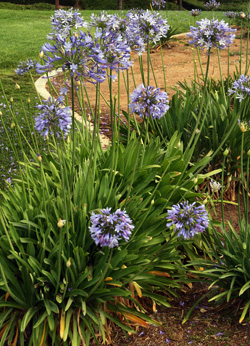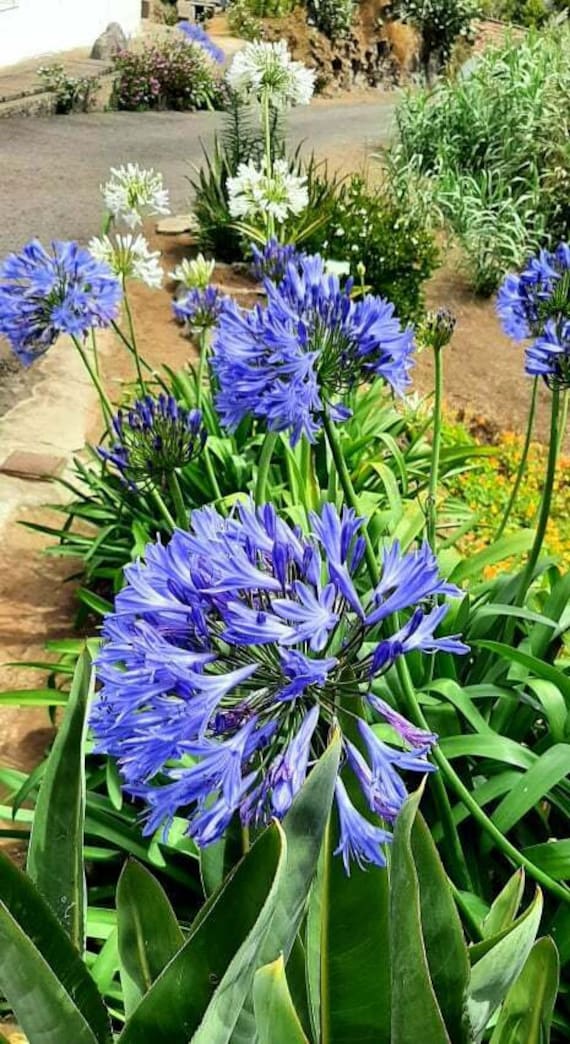Common Agapanthus Issues and How to Solve Them
Common Agapanthus Issues and How to Solve Them
Blog Article
Grasping the Art of Agapanthus Care: Vital Actions for Healthy Growth and Dynamic Flowers
In the realm of cultivation, the farming of agapanthus stands as a satisfying venture for those that look for to support these stylish flowering plants. With their striking flowers and stylish vegetation, agapanthus has actually recorded the focus of garden enthusiasts worldwide. Nevertheless, attaining optimum development and vivid blossoms requires a nuanced method that includes various important actions. From picking the appropriate selection to grasping pruning methods, the trip towards growing growing agapanthus plants is complex and holds the crucial to opening the complete capacity of these herb treasures.

Picking the Right Agapanthus Range

When picking the right Agapanthus range for your garden, take into consideration aspects such as environment suitability, blossom color, and development practice. Furthermore, think about the climate in your area to make sure the Agapanthus range you select can grow in your particular problems. Recognizing the growth practice of various Agapanthus ranges is crucial for appropriate placement within your garden.
Suitable Growing Problems
Considering the optimal environmental demands is essential for effective Agapanthus farming. Agapanthus plants are delicate to cold temperatures and must be shielded from frost throughout wintertime months.
To ensure healthy development and dynamic blooms, plant Agapanthus bulbs at a depth of about 2-4 inches and room them 8-12 inches apart. Including raw material, such as garden compost, to the dirt can improve drain and fertility, promoting robust origin growth. Mulching around the base of the plants assists keep moisture and suppresses weed development. Routine watering is essential, especially throughout the growing period, to maintain the dirt regularly damp however not waterlogged.
Watering and Fertilizing Tips
Keeping proper wetness degrees and giving essential nutrients are key elements in the care routine for Agapanthus plants. When it comes to sprinkling Agapanthus, it is essential to strike an equilibrium. These plants prefer consistently wet soil however are at risk to root rot if overwatered.
Fertilizing Agapanthus is necessary for promoting healthy and balanced development and prolific flowers. Apply a balanced fertilizer, such as a 10-10-10 formula, in the very early springtime as brand-new development arises. Repeat this application every 6-8 weeks throughout the growing period. Stay clear of too much fertilization, as it can result in lavish vegetation at the expenditure of blooms. Always adhere to the maker's directions for appropriate dilution and application approaches. By More Help adhering to these watering and fertilizing suggestions, you can guarantee your Agapanthus plants prosper and generate lively, long-lasting blooms.
Trimming Techniques for Agapanthus
Pruning Agapanthus plants at the proper times and with correct methods is crucial for preserving their health and wellness and advertising optimal growth and flowering. The perfect time to trim Agapanthus is in late wintertime or very early spring before new development emerges.
For flowered stems, wait up until the flowers have perished and afterwards trim them back to the base. This read review not just cleans up the plant's appearance yet likewise encourages the development of brand-new blossom buds. Deadheading spent blossoms can also redirect the plant's power into generating even more blossoms instead of setting seeds. Nevertheless, if you desire to gather seeds for propagation, leave some blossoms to mature and completely dry on the plant.
Keep in mind to use tidy, sharp tools to make exact cuts and lower the danger of presenting diseases. Agapanthus. Normal pruning will certainly aid keep your Agapanthus looking cool and healthy while guaranteeing an abundant display screen of beautiful flowers
Dealing With Common Bugs and Conditions
After making sure correct trimming techniques for Agapanthus, it is important to attend to common insects and diseases that can affect the health and vigor of these plants. Agapanthus plants are typically hardy but can still come down with certain problems. One common pest that influences Agapanthus is the Agapanthus gall midge. This small, orange fly lays its eggs in the foliage, causing distorted development and blossom buds that fail to open up. To combat this insect, trim and ruin any type of afflicted plant components and consider using insecticidal soap.
One more common problem is fungal fallen leave place, which presents as dark lesions on the fallen leaves. To avoid fungal diseases, make certain excellent air blood circulation around the plants, stay clear of overhead watering, and eliminate any infected fallen leaves quickly. Additionally, Agapanthus plants can struggle with origin rot if they are grown in improperly draining pipes dirt. To prevent this, plant Agapanthus in well-draining soil and avoid overwatering. By being alert and taking prompt activity versus illness and parasites, you can assist your Agapanthus plants flourish and generate vibrant blossoms.

Final Thought
In final thought, mastering the art of agapanthus care entails choosing the ideal range, giving ideal planting conditions, appropriate watering and feeding, appropriate trimming strategies, and attending to common insects and conditions. By following these important actions, you can ensure healthy development and lively blossoms for your agapanthus plants. Keep in mind to consistently check and keep your plants to promote their overall well-being and long life.
To ensure healthy and balanced find more info growth and dynamic blooms, plant Agapanthus light bulbs at a deepness of regarding 2-4 inches and area them 8-12 inches apart. By following these watering and fertilizing pointers, you can ensure your Agapanthus plants flourish and create dynamic, durable flowers.
One common insect that affects Agapanthus is the Agapanthus gall midge. Additionally, Agapanthus plants can experience from root rot if they are planted in inadequately draining soil. By following these essential steps, you can guarantee healthy and balanced development and dynamic blossoms for your agapanthus plants.
Report this page